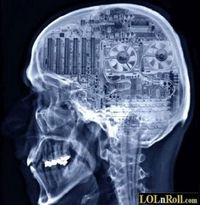Head injury
From ArticleWorld
A head injury represents a physical trauma to the head, which may also cause brain injuries. It is a common cause of childhood hospitalization, as it can often appear accidentally. More serious head injuries commonly appear in people who practice dangerous sports, or as a consequence of extreme violence.
Symptoms
Head injuries cause various symptoms. If only the skull is damaged, the symptoms will vary, from minor concussions and possibly hematoma, to more serious ones.
Skull fracture can determine:
- The leaking of cerebrospinal fluid, which can be observed as a drainage of a clear fluid from nose, mouth or ears. The sheets that surround the brain may be teared, which exposes the brain to infections.
- The pinching of a nerve that innervates eye muscles, which may hint at a broken facial bone.
- A visible deformity in the skull, like a sunken eye or a deviated nose.
If the head injury also affects the brain, loss of consciousness with episodic lucid intervals, confusion, headaches, and personality changes may occur.
Diagnosis
In order to diagnose a head injury, a CT of the head should be performed, especially for children who have lost their consciousness for more than one minute, or for those who have lost their consciousness for an unknown amount of time. If the head injury seems to be associated with a neck injury, a cerebrospinal film should be obtained. Should pain be resented in the arms, neck or back, the patient should be immediately immobilized, as this may be caused by a spinal injury which may otherwise aggravate.
Head injuries may cause profound and prolonged coma. This may determine neurologic deficits, but if they improve quickly enough, chances are that the recovery will be complete.
Treatment
The treatment involves typical trauma procedures. Continuous medical supervision is required, especially for patients who enter a coma. The substances that the body needs in order to function correctly should be provided externally if it is otherwise impossible (for example, if the patient cannot feed himself).
